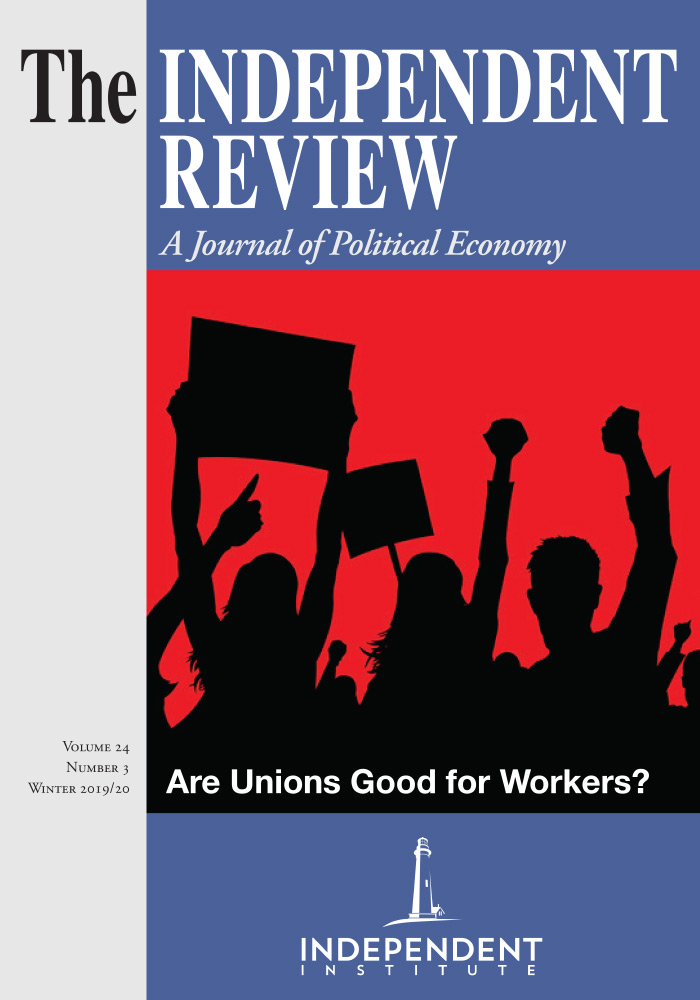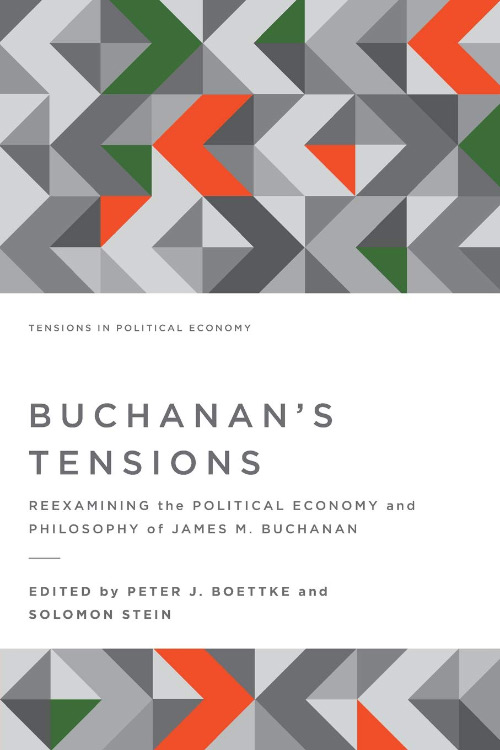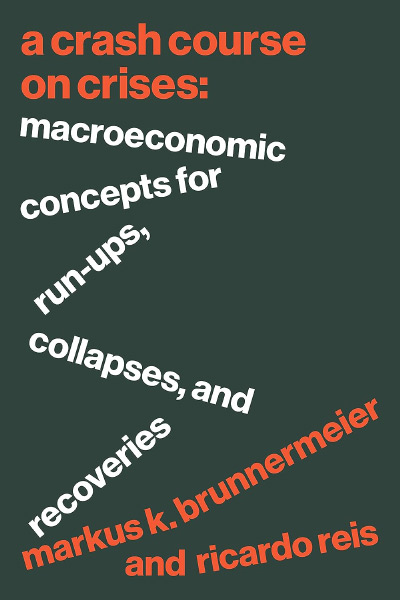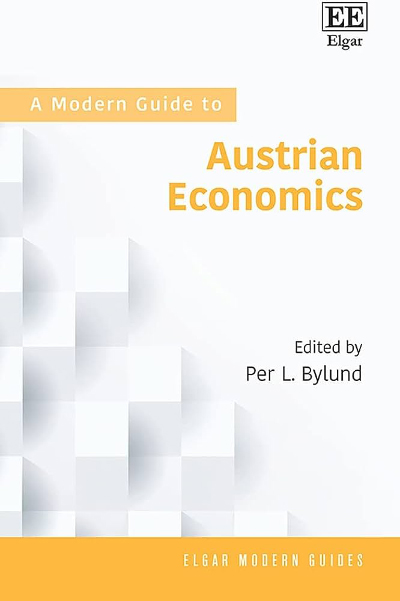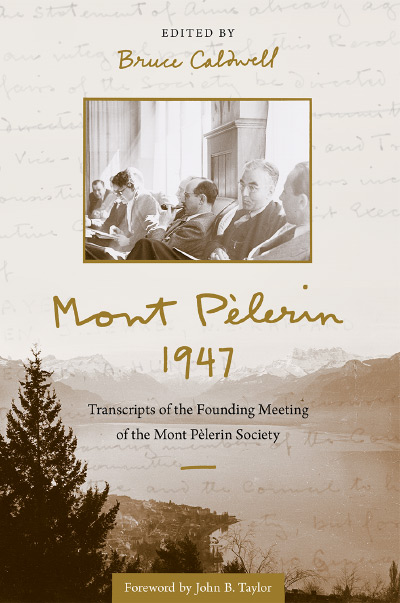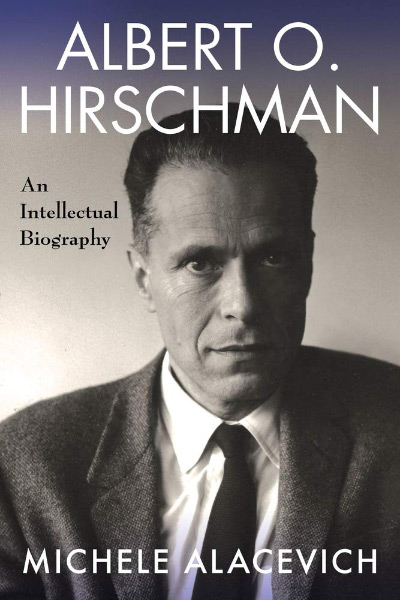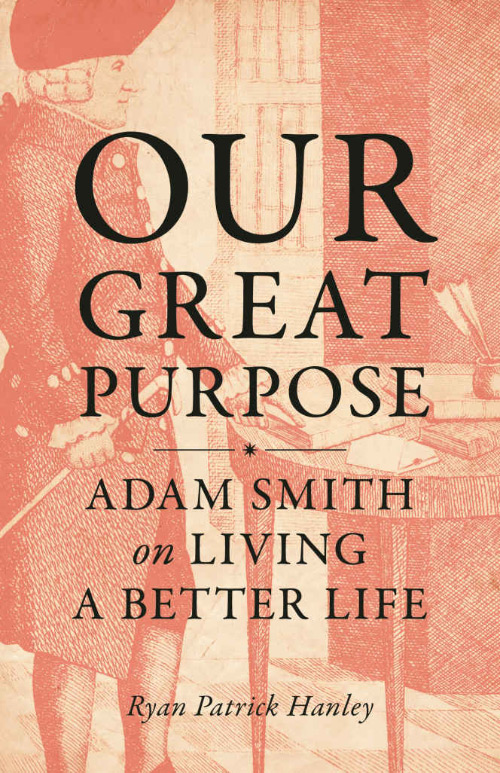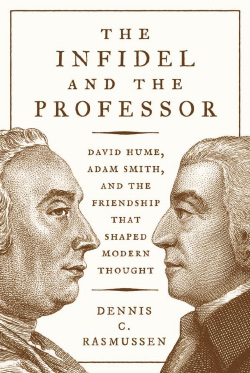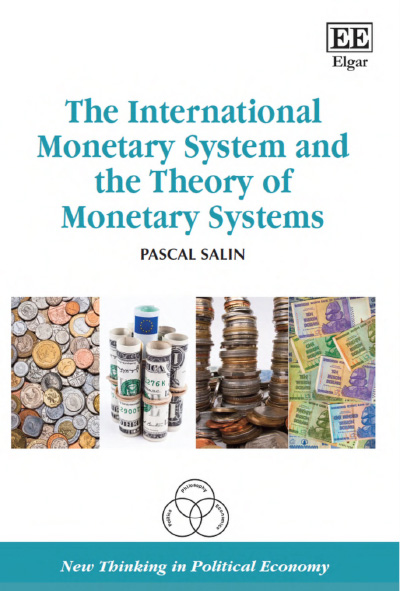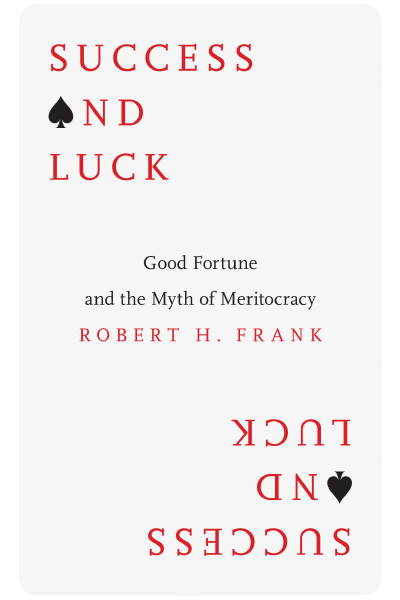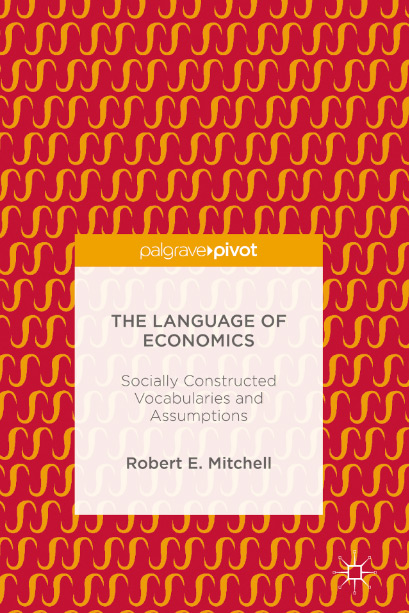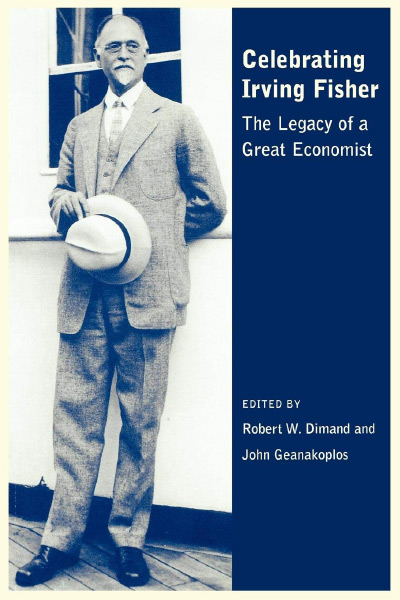James M. Buchanan’s remarkable academic career—crowned with the Nobel Prize in Economics in 1986—spanned more than six decades. He was the central figure in the establishment of the public-choice and constitutional political economy research paradigms, and his contributions had transformative impacts on our understandings of public finance, the provision of public goods, the theory of clubs, and constitutional design, among other fields. The unifying theme of Buchanan’s work lay in its analytical approach, described by the Nobel committee as the “development of the contractual and constitutional bases for the theory of economic and political decision-making.” This approach was characterized by a foundational commitment to normative individualism and—building on this foundation—the development of an individualistic theory of collective decision making via contractarian agreement on constitutional rules to govern collective choice.
As its title suggests, the volume Buchanan’s Tensions—edited by Peter J. Boettke and Solomon Stein and published by the Mercatus Center at George Mason University—is devoted to exploring some of the tensions that—unsurprisingly—exist in Buchanan’s work, given its expanse and the fact that it was produced over such an extended period of time.
The book consists of eight substantive chapters, authored by some of the most eminent Buchanan scholars, including his former collaborators and students. Before sketching some brief thoughts provoked by the book’s treatment of “Buchanan’s tensions,” the review here provides an overview of the themes and issues covered.
The first chapter, written by Richard E. Wagner, argues that Buchanan’s political economy represents a “valiant but failed effort to square the circle” because Buchanan—in Wagner’s judgment—was fundamentally concerned with open-ended processes of emergent social order but tended to treat these processes analytically in ways that “could never escape the hold of closed-form theorizing” (p. 9). In the second chapter, Roger D. Congleton explores the apparent tension between two aspects of Buchanan’s view of human nature and individual agency, contrasting his emphasis on individuals as rulefollowing beings subject to internalized constraints with his reliance on the standard homo economicus that is also part of his work. Chapter 3, authored by Peter J. Boettke and Jayme S. Lemke, focuses on the contrast between Buchanan’s emphasis on deliberate institutional design and a Hayekian focus on institutional emergence. It attempts to reconcile these emphases by adopting a polycentric approach, as exemplified in the work of Elinor Ostrom and Vincent Ostrom. Randall G. Holcombe examines the extent to which Buchanan’s contractarianism stands in tension with his apparent concern for individual liberty. The process-oriented theory of constitutional design developed by Buchanan has no direct implications for the substantive content of constitutional rules, leaving open the possibility that constitutions adopted behind the veil of uncertainty are nonliberal. As Holcombe observes, “[F]rom a classical liberal perspective, one major issue is whether the constitutional rules with which people agree are also rules that preserve people’s liberty” (p. 95). Stefanie Haeffele and VirgilHenry Storr argue that heterogenous societies and the potential presence of unreasonable individuals pose a particular challenge for Buchanan’s contractarian approach. Because the approach relies on unanimous agreement as the criterion to legitimize constitutional rules or constitutional changes, heterogeneity or lack of reasonableness on the part of some participants threatens the possibility of agreement. Interestingly, like Boettke and Lemke, Haeffele and Storr turn to the Ostroms’ focus on polycentricity as a potential solution.
Picking up on themes raised by Congleton, Gerald Gauss focuses on the importance of moral norms in human behavior and argues that Buchanan’s “project is torn between its commitment to Comprehensive Hobbesianism and its acceptance of a large-scale moral order” (p. 138). In Gauss’s view, this tension has significant consequences, in part because the precontract “state of nature” is characterized by the presence of a moral order that significantly shifts the baseline from which contractarian agreement must be sought. In chapter 7, Christopher J. Coyne takes up Buchanan’s notion of the protective state—that is, the dimension of state activity concerned with the provision of rights protection against internal and external threats as well as contract enforcement. He develops the argument that the protective state leads to the endogenous growth of human and physical capital that enables coercion. This development in turn is likely to undermine the liberty-enhancing purpose of the protective state, even in the absence of nefarious motives on the part of state actors. The final chapter, written by David M. Levy and Sandra J. Peart, employs early exchanges among founders of the Virginia School to examine Buchanan’s views on the role of the economist. They come to the conclusion that a tension exists between Buchanan’s insistence on motivational symmetry and his “unwilling[ness]”—Levy and Peart argue—“to suppose that economists, too, were [sic] characterized by the same bundle of private and public motivations as everyone else” (p. 172).
As this brief summary makes clear, this eclectic volume covers a broad range of topics. The chapters are connected by the fact that all deal with aspects of Buchanan’s work that the authors perceive to be in tension with other features of the Buchanan corpus. In doing so, the book provides a welcome opportunity to consider how we think about tensions in the work of a particular scholar and what the relevance of identifying and thinking through those tensions are.
Richard Wagner’s opening essay lays out three senses of tension that are useful in this context (pp. 10–11). First, it is possible that two aspects of a body of work are logically incoherent, revealing an underlying confusion or a fundamental flaw that undermines the central thrust or conclusions of an argument. As Wagner suggests, this type of tension is likely to be rare—at least among scholars whose work is going to attract significant attention.
Second, tensions may develop over time in a scholar’s work. Such tensions may reflect growth over a scholarly career. Taken on its own, each part is coherent (that is, does not suffer from the first sense of tension), but scholarly development, including reconsideration of earlier arguments, has led to a new position over time that is—in certain aspects—incompatible with earlier views. Such tensions, too, appear to be largely absent from Buchanan’s work. To be sure, there are shifts in emphasis: the Buchanan of The Limits of Liberty, although retaining the basic contractarian commitment, has a less-optimistic outlook than the Buchanan of The Calculus of Consent. Similarly, Buchanan’s later work is decidedly less sanguine about the political feasibility of securing agreement on nonmajoritarian political structures and therefore moves in the direction of considering domain restrictions on majority rule. But these changes reflect logically consistent developments; they do not represent repudiations of earlier positions.
Third, Wagner suggests that tensions may arise as an inherent element of a body of thought, reflecting what he terms “dialectical thinking . . . in which the whole requires interaction among elements, each ofwhich seems to contradict the other” (p. 11).This type of tension undoubtedly occupies a central place in Buchanan’s thought, and a number of the essays in the volume (including Congleton’s, Gauss’s, Holcombe’s, and Wagner’s) highlight examples of it. Significantly, Buchanan himself was acutely aware of these tensions and readily acknowledged them. This ismost obvious in his devotion to the principle of the “relatively absolute absolutes,”which he used to deflect critique of the contrast between his apparent commitment to enduring moral values and his contractarian enterprise rooted in normative individualism. As he put it in an interview with Geoff Brennan, “I couldn’t live without the relatively absolute absolutes. It getsme out of a lot of jams. It getsme off a lot of hooks, too[;] . . . it prevents the necessity of taking a position either as a relativist in all respects or as an absolutist” (James M. Buchanan, The Intellectual Portrait Series: A Conversation with James M. Buchanan (Part 2), interview by Geoffrey Brennan [Indianapolis, Ind.: Liberty Fund, 2001).
We might add two additional notions of tension to Wagner’s list, each of which plays a role in several of the essays in the current volume. One is tensions that arise out of particular interpretations of a scholar’s work but are resolved by other (plausible) readings. The Levy and Peart chapter represents perhaps the clearest example. Levy and Peart perceive a tension in Buchanan’s work revolving around economists’ motivations. According to them, Buchanan assumes that economists are motivated by “the truth” (p. 187)—an assumption they perceive to be in tension with the motivational assumptions that characterize individuals in Buchanan’s work more generally. The origin of this interpretation appears to lie in Buchanan’s conception of the role of economists in public life. For Buchanan, economists’ role is circumscribed: based on their professional expertise, economists can advance hypotheses regarding potential Pareto improvements in the social order. The test of whether such proposals do, in fact, embody Pareto improvements is whether they are able to secure the agreement of the individuals who must live under them. For Levy and Peart, the fact that economists seek to identify potential Pareto improvements implies that they are motivated by “the truth” (i.e., the identification of actual Pareto improvements)—a motivational assumption that would seem to stand in stark contrast to the model of human behavior employed by Buchanan for other actors. Given the authors’ interpretation, this is undoubtedly a tension. But, of course, this tension is easily resolved under a different interpretation that is at least as plausible. The returns that economists secure from their pursuits depend on the “usefulness” of the economists’ advice, as indicated by the agreement of individuals to their proposals. Thus, the search for Pareto improvements need not be motivated by intrinsic desire but can be understood as derivative of standard motivations that characterize all actors in the Buchanan model. As a simple analogy, there is no reason to suppose that car mechanics are intrinsically motivated by a desire to fix cars—the standard motivation to make a living is fully sufficient. Tensions of this kind—that is, tensions that can be resolved by resort to plausible alternative interpretations—arguably do not raise direct concerns with respect to a scholar’s work.
A final sense of tension may refer to issues that appear to represent conflict within a body of thought but that are actually as yet unresolved questions that emerge out of a scholar’s work. Tensions in this sense define the frontiers of a research program. Perhaps the clearest example of this in the current volume is the important challenge addressed in Coyne’s chapter. Starting from Buchanan’s notion of the protective state, Coyne’s argument raises the problem of constitutional enforcement with a special twist. This twist consists of the fact that enforcement is not simply the problem of ensuring rule application when actors face incentives not to comply but also the problem that there are—at least in some circumstances—endogenous threats to enforcement that are likely to increase over time (in the particular case Coyne examines, the growth of human and physical capital with coercive abilities). Although it is true that Buchanan’s work does not provide a ready-made answer to Coyne’s challenge, it is important to note that this challenge does not identify a “tension” in the sense of incoherence or contradiction. Rather, Coyne identifies a feature of the political process that is not yet fully addressed within the Buchanan framework and that therefore requires further theoretical and empirical work. Are there institutional mechanisms that can contain the liberty-eroding potential of the protective state? This critical question does not mark a deficiency in Buchanan’s work but rather the research frontier in constitutional political economy. Tension in this sense is potentially highly productive.
What is the purpose of such a typology of tension? These distinctions are critical because whether tensions matter—that is, whether we should take an interest in them—depends on our analytical purpose. On the one hand, we may be concerned with tensions primarily as a question of intellectual history. Does Buchanan’s work represent a coherent whole? Did he hold consistent positions? How did his views develop and change over the course of his career? What open questions did his work leave? If the enterprise is one of intellectual biography or the history of ideas, then all types of tensions reviewed above are relevant.
On the other hand, a second type of enterprise may begin with the work of a particular scholar, but its ultimate interest lies in the past and present development of a research tradition—in this particular case, public choice and constitutional political economy. If this is the enterprise, then tensions that are concerned with a scholar’s biographical particulars (“Did he hold consistent positions over time?”) become less interesting and relevant. Instead, it is primarily the last sense of tension that moves to the fore: What are the open challenges that remain, and how can a research tradition be pushed forward in productive ways? Here, tensions are not so much an embarrassment as they are problems that serve a programmatic purpose, posing substantive challenges that must be taken up in order to push a research paradigm’s frontier outward.
What does all of this mean in the context of the current volume? At one level, this book is concerned specifically with Buchanan, who undoubtedly occupies a central place in the history of twentieth-century social science. At the same time, to engage the next generation of scholars and to maintain a research program’s vibrancy, it is critical to employ a scholar’s body of work as a launch pad rather than to treat it as a self-contained and definitive whole. As Gerald Gauss puts it eloquently in his essay in this volume, “Constitutional political economy is not a completed artifice to be admired and defended, but an ongoing project, constantly refining its assumptions and analysis. Such is the nature of science. Discovering tensions moves us forward, pointing us toward the next step—and a better account of social cooperation and public choice. James Buchanan got us on our way. It is up to us to move further” (p. 139).
The strength of this edited volume lies in paying homage to Buchanan without sitting still, using the tensions in his body of work to sketch the next frontier of the research tradition he helped to establish.
| Other Independent Review articles by Georg Vanberg | |
| Summer 2007 | Law Without Nations?: Why Constitutional Government Requires Sovereign States |
| Spring 2003 | A Theory of the State: Economic Rights, Legal Rights, and the Scope of the State |

